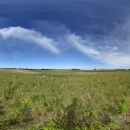About Us
Established in 1976 by motivated residents, the refuge preserved wildlife resources threatened by commercial and industrial development. Now, the refuge enhances urban habitat while offering community programs, environmental education and access to nature on the edge of the Twin Cities.
This refuge is part of a corridor of land and water stretching nearly 70 miles along the Minnesota River, from Bloomington to Henderson, Minnesota. Comprised of more than 14,000 acres, the refuge spans across both rural and urban communities, and offers a variety of free outdoor recreational experiences for individuals and families.
Our Mission
The mission of the National Wildlife Refuge System is to administer a national network of lands and waters for the conservation, management and, where appropriate, restoration of the fish, wildlife and plant resources and their habitats within the United States for the benefit of present and future generations of Americans.
Every national wildlife refuge national wildlife refuge
A national wildlife refuge is typically a contiguous area of land and water managed by the U.S. Fish and Wildlife Service for the conservation and, where appropriate, restoration of fish, wildlife and plant resources and their habitats for the benefit of present and future generations of Americans.
Learn more about national wildlife refuge was created for a special purpose. Some were created to protect migratory birds, others to protect threatened or endangered species or unique habitats, while others fulfill another special purpose.
The primary purposes of Minnesota Valley National Wildlife Refuge are:
- To provide habitat for a large number of migratory waterfowl, fish and other wildlife species
- To provide environmental education, wildlife recreational opportunities, and interpretive programs for hundreds of thousands of Twin Cities residents
- To protect important natural resource areas from degradation
- To protect the valley’s unique social, educational and environmental assets
Our History
October 8, 1976 - The refuge was established by Congress (Minnesota Valley National Wildlife Refuge Act, Public Law 94-466), authorizing the initial 9,500 acre purchase of land to create the refuge.
1984 - A cooperatively prepared conservation plan is completed in collaboration with the State of Minnesota and other state and local partners. Later that year the Act was amended to allow for an additional 2,000 acres of refuge to be established.
1995 - Mittelstad tract (what we now call the Rapids Lake Unit) was added, bringing the refuge to nearly 14,000 acres.
2020 - The refuge is designated an urban refuge and awarded $1 million in additional funding to bolster urban refuge programs.




